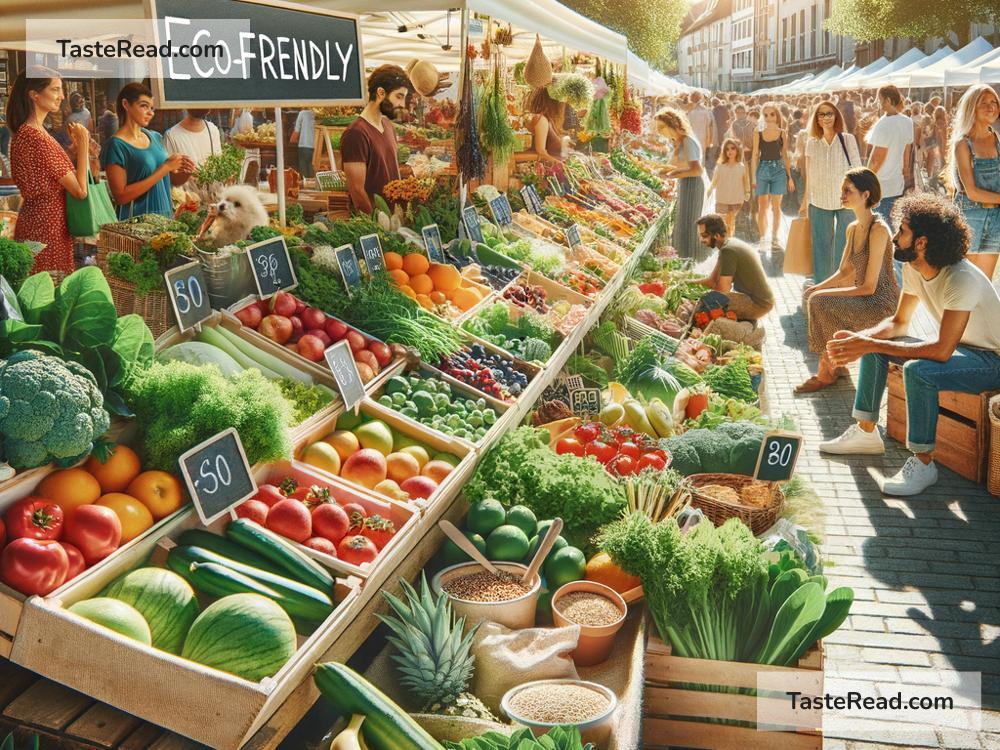How to Incorporate More Sustainable Foods Into Your Diet
Making small changes to your diet can make a big difference for the planet. Sustainable eating is all about selecting foods that are healthier for your body and better for the environment. It’s a way to ensure that future generations have access to healthy foods while reducing the negative impacts of farming, food production, and waste. The good news is that you don’t need to overhaul your entire lifestyle to eat more sustainably—every step counts! In this article, we’ll explore simple, practical ways to incorporate more sustainable foods into your diet.
What Are Sustainable Foods?
Sustainable foods are those that are produced in ways that protect the environment, maintain natural resources, and support local farmers and communities. These include:
- Plant-based foods like fruits, vegetables, legumes, grains, nuts, and seeds.
- Locally grown foods that travel shorter distances to reach your plate.
- Seasonal produce that is grown naturally without relying on artificial environments.
- Organic options that are produced without harmful pesticides or chemicals.
- Fair-trade items that ensure fair wages and ethical practices for farmers.
By choosing sustainable foods, you reduce waste, energy use, and pollution while supporting a healthier planet.
Why Does Sustainable Eating Matter?
The way food is produced and consumed has a significant impact on the environment. Large-scale farming, overfishing, and reliance on packaged processed foods can lead to:
- Deforestation
- Soil degradation
- Water pollution
- Greenhouse gas emissions
- Loss of biodiversity
Making sustainable food choices isn’t just good for the environment—it often leads to healthier eating habits, too. Many sustainable foods are nutrient-rich and free of artificial additives, making them better for your body.
Easy Steps to Make Your Diet More Sustainable
You don’t need to become a full-time environmentalist to eat sustainably! Here are simple steps you can take:
1. Focus on Plant-Based Foods
Plant-based foods like vegetables, fruits, grains, nuts, and seeds have a smaller environmental impact compared to meat and dairy. Producing plant-based food uses less water and land, and it generates fewer greenhouse gases. You don’t need to go fully vegetarian or vegan—try incorporating more meat-free meals during the week. For example, you could start with “Meatless Mondays.”
Some easy plant-based swaps include:
– Lentils, beans, or tofu instead of beef or chicken.
– Almond or oat milk instead of cow’s milk.
– Veggie burgers instead of traditional hamburgers.
2. Choose Seasonal Produce
Seasonal produce is better for the environment because it’s grown locally without the need for artificial heating, lighting, or cooling. When you eat foods that are in season, they’re fresher, more flavorful, and often cheaper. Visit a farmers’ market or check labels to find out what’s in season near you.
For example:
– Strawberries are best in summer.
– Squash and pumpkins thrive in fall.
– Kale and citrus fruits are ideal in winter.
3. Support Local Farmers
Buying local foods reduces the distance your food travels and cuts down on carbon emissions from transportation. It also supports local farmers and boosts your community’s economy. Look for nearby farmers’ markets, community-supported agriculture (CSA) programs, or local food co-ops.
If you can’t buy everything locally, even choosing a few staples—like eggs, honey, or vegetables—directly from local farms can make a difference.
4. Reduce Food Waste
Food waste is one of the biggest sustainability issues today. Globally, millions of tons of food end up in landfills every year. To cut down on waste:
– Plan meals ahead so you only buy the ingredients you need.
– Use leftovers creatively—turn yesterday’s roast chicken into today’s soup.
– Freeze fruits or vegetables before they spoil.
– Compost food scraps instead of throwing them away.
When you waste less, you also save money and limit your environmental footprint.
5. Look for Ethical and Eco-Friendly Labels
Pay attention to labels while grocery shopping. Choosing products with certifications like “Fair Trade,” “Organic,” “Rainforest Alliance,” or “Marine Stewardship Council” ensures that food is grown or harvested responsibly. These labels often mean less harm to wildlife, better conditions for farmers, and higher-quality food for you.
6. Eat Less Processed Food
Packaged and processed foods often require more energy and resources to produce. They may also contain additives and preservatives that aren’t good for your health. Opt for whole foods whenever possible. For example:
– Make a homemade pasta sauce instead of buying one in a jar.
– Snack on nuts or fresh fruit instead of chips or candy.
– Bake your own bread instead of buying pre-sliced loaves.
Whole, fresh foods are better for the planet and more nourishing for your body.
7. Consider Sustainable Protein Sources
If you eat meat, try reducing your portion sizes or opting for more sustainable sources like:
– Pasture-raised chicken or grass-fed beef.
– Fish with the Marine Stewardship Council (MSC) certification.
– Eggs labeled free-range or cage-free.
You can also diversify your protein intake with plant-based options, such as beans, lentils, quinoa, and tofu.
Final Thoughts
Incorporating sustainable foods into your diet doesn’t have to be overwhelming. Small choices—like buying seasonal produce, eating one plant-based meal per day, or shopping from local farmers—can make a big impact. Not only will you be helping the planet, but you’ll also enjoy fresher, healthier foods that are better for you and your family.
Every step toward sustainable eating counts, so start where you can—and have fun experimenting with new recipes and ingredients. Together, we can all play a part in building a more sustainable future through the food we eat.


